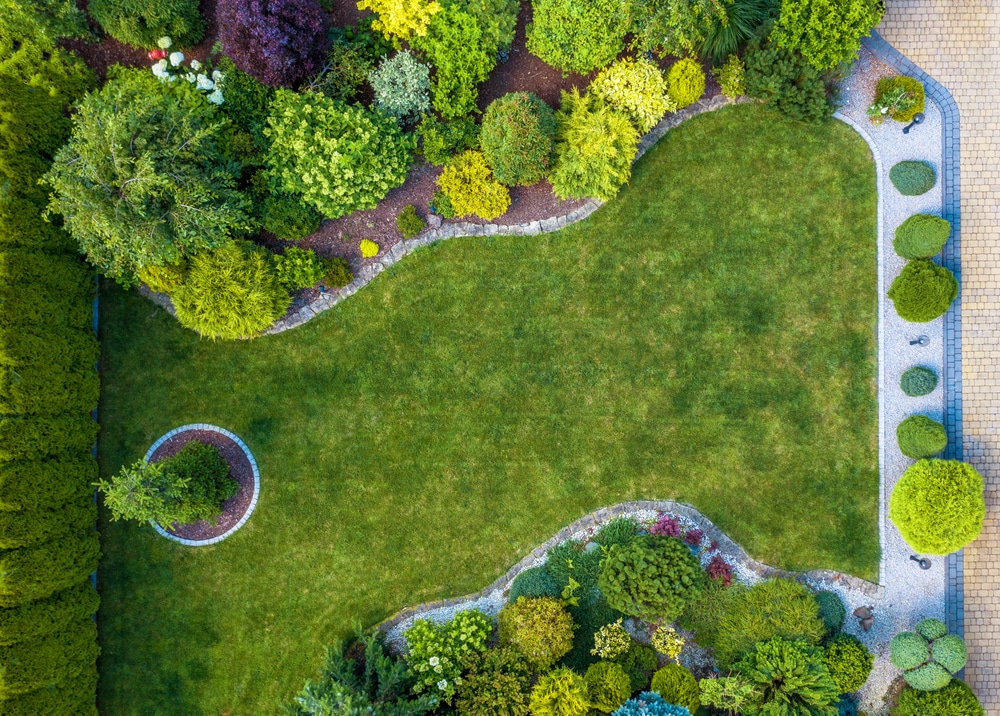More and more people are interested in sustainability concepts in numerous areas of their lives, and one great example here is the realm of landscaping. There are a number of different ways to achieve an eco-friendly landscape, one that’s not only beautiful but also actively benefits the environment around it rather than detracting from it.
At BioGrass Sod Farms, we’ve assisted numerous clients looking to design or improve a sustainable landscape on their property. We offer a wide range of products, from premium topsoil and sod materials through rocks, gravel, compost, hardgoods and more. Here are some general concepts, materials and other themes that are often useful to those who want to maintain an eco-friendly landscape.
Use of Native Plants (and Friendly Soil)
One of the top approaches to sustainable landscaping is to make use of native plants that are already accustomed to your region’s climate. Making use of these plants in your design, combined with special soil amendments such as compost and mulch, can reduce the amount of water required for maintenance and help you maintain a thriving landscape.
For instance, our premium topsoil contains a blend of natural soil and compost that is designed to promote plant health. This topsoil can be used to fill in empty flats, level out your yard and help ensure the success of any new plants.
Rock Garden and Similar Concepts
For those who want to minimize the amount of lawn they need to maintain, a rock garden can be an ideal solution. This concept involves the use of stones and rocks combined with native plants and shrubs to create a visually pleasing arrangement that is quite low-maintenance.
Similarly, xeriscaping provides ways to reduce water usage while also creating attractive designs. This is an especially useful approach for those in dry climates, as it involves the use of native plants and other materials that are suited to the environment.
Use Permeable Hardscapes
Hardscapes are another great way of limiting how much grass needs to be maintained. These materials, such as pavers and stones, are designed to allow water to pass through them instead of running off into other areas. This helps promote groundwater recharge while also reducing the amount of runoff that might otherwise occur – a key benefit for eco-friendly landscaping solutions!
In particular, the use of permeable hardscapes – that is, materials like pavers with gaps between them – can be especially helpful for reducing runoff and water usage. At BioGrass Sod Farms, we provide a range of hardscape materials as well as soil amendments to help promote healthy plant growth.
Vertical Garden
Another great way to reduce water usage and improve a landscape’s sustainability is to create a vertical garden. This concept involves utilizing vertical structures, such as trellises or walls, in order to grow vines or other plants that would otherwise require more space. Not only does this approach save on water usage, but it also lends an attractive appearance to any outdoor space.
If you’re thinking about a vertical garden, be sure to look for plants that are better suited to the environment and are native (or at least compatible) to your region. You can also use climbing vines or plants with shallow roots in order to create a lush landscape without requiring as much water.
Deciduous and Evergreen Trees
When it comes to trees, deciduous and evergreen varieties both have their place in sustainable landscaping. Deciduous trees, for example, provide excellent shade in the summer but also allow sunlight to pass through during the winter, which can help reduce energy costs when it comes to heating your home.
Evergreen trees are great sources of oxygen and can also help with air quality, while also providing a year-round green appearance to any landscape. And with the right species of trees and shrubs, you can create an attractive landscape without having to expend too much time or money on maintenance.
Use the Landscape to Increase Home Efficiency
There are even a few ways you can utilize your outdoor landscape as a way of improving home efficiency. Here are some examples:
Vines for insulation: Climbing vines can be used to provide shade and insulation for your home in the summer, while also allowing light and heat to pass through during the winter months.
Rainwater collection: Installing a rain barrel or other water collection system helps you save on your water bill while also reusing valuable resources.
Windbreaks: Planting trees or shrubs in strategic locations around your home can help block wind and reduce energy costs associated with heating and cooling.
Shading the AC unit with trees or bushes: Another great way to reduce energy costs is to plant trees or shrubs near your outdoor AC unit in order to shade it from the sun. This helps improve efficiency and ultimately save you money on utilities.
Erosion Control
Finally, proper erosion control is an important factor to consider when creating an eco-friendly landscape. This can involve the use of terraces and other techniques in order to reduce runoff and limit soil erosion. In addition, mulching can help promote healthy soil while also decreasing your need for water or fertilizer inputs.
Overall, there are a number of ways to create a sustainable landscape. From choosing the right plants to utilizing vertical structures and other techniques, there are plenty of options available for any budget or lifestyle. If you’re interested in creating an eco-friendly landscape, contact BioGrass Sod Farms today to get started! We specialize in providing high quality materials and advice that can help make your vision come to life.
